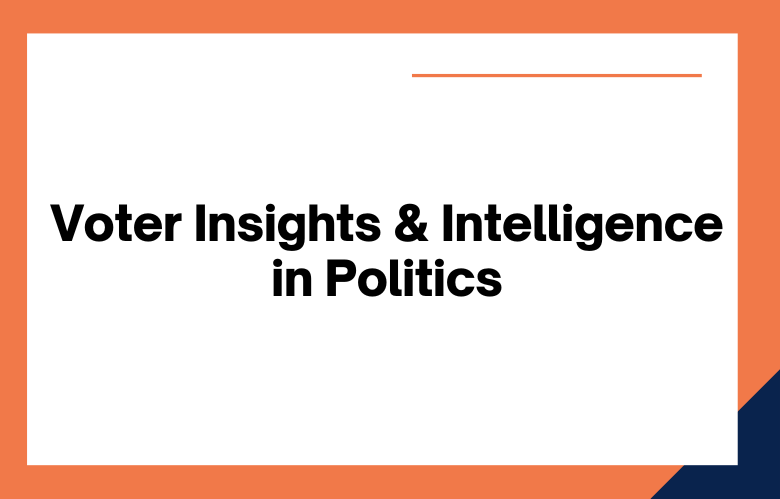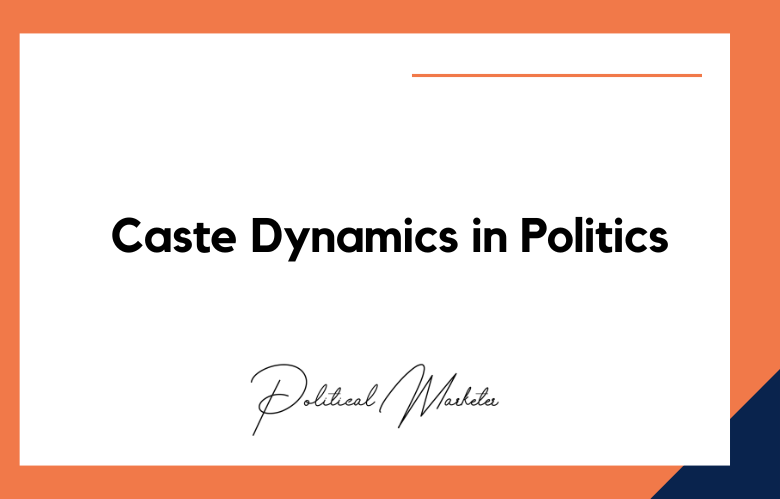In an increasingly digital world, political campaigns must use the wide range of voter insights and intelligence available.
By utilizing data-driven strategies for gathering and analyzing voter information, campaigns can identify potential supporters, create meaningful messaging, and effectively target their outreach.
Here’s a closer look at how campaigns can use voter insights and intelligence to win elections.
What are Voter Insights & Intelligence?
Voter insights and intelligence refer to the data-driven information political campaigns use to understand their voters better.
It includes demographics such as age, gender, race or ethnicity; voting history; party affiliation; location; media consumption habits; job titles; income levels; social media engagement metrics; online behavior patterns; issues that people care about most; opinions on candidates or policy proposals; etc.
Political campaigns can use all this information to craft more effective messaging that resonates with their target audiences.
How Can Political Campaigns Use Voter Insights & Intelligence?
Political campaigns can leverage voter insights and intelligence in digital advertising and traditional outreach initiatives.
For example, using demographic data collected through voter registration records, campaigns can create targeted digital ad campaigns that reach specific groups of people within their district or state who are likely to vote in upcoming elections.
Similarly, they can use social media analytics tools to identify high-value influencers who can sway public opinion in favor of their candidate. They can use polls and surveys to gauge public opinion on specific issues or topics and shape their messaging accordingly.
Campaigns may also use predictive analytics models to understand better which strategies are most likely to be successful at driving turnout among crucial voting blocs.
What Are the Benefits of Leveraging Voter Insights & Intelligence?
The primary benefit of leveraging voter insights and intelligence is that it allows political campaigns to develop more informed strategies that account for factors like demographics, voting histories, regional preferences, etc., which increases the likelihood of success on election day (or during any other campaign event).
It allows them to tailor their messaging to appeal directly to their target audience by speaking now about issues that matter most—a tactic that has proven its ability to drive higher engagement levels among voters.
By having access to real-time data about voters’ opinions on various topics or candidates/policies being discussed during a campaign cycle (e.g., through polls), political campaigns can quickly adjust course to ensure they’re hitting all the right notes with potential supporters while avoiding those that may turn off swing voters or other key voting blocs.
What Voter Insights Reveal
Voter insights give campaigns valuable information about the voters they must reach to win an election.
This intelligence provides critical details such as demographics, past voting patterns, likely support or opposition to issues or candidates, and more.
For example, voter insights can help campaigns identify which voters are most likely to support their candidate or issue and which are more likely to oppose them—and why. It allows campaigns to target their resources where they will be most effective.
Voter insights also help campaigns understand how different types of people respond to other messages and tactics.
For example, if a campaign knows that specific demographics respond best to television ads. In contrast, others prefer digital outreach such as text messages or emails; then, it can prioritize its resources accordingly.
Suppose a campaign knows that certain groups respond more favorably to specific language or messages than others. In that case, it can tailor its messaging accordingly to maximize its chances of success.
How Campaigns Use Voter Insights
Campaigns use voter insights in many ways. Some use them to craft targeted messages that will resonate with specific constituencies within their district or state; others use them as part of their get-out-the-vote efforts by targeting potential supporters who may be unlikely to vote on Election Day; still, others use them as part of their fundraising efforts by targeting high-value donors who are likely to contribute generously; and some even use them when making decisions about where candidates should travel to maximize visibility in critical areas within the district or state they represent.
The Bottom Line on Voter Insights
In short, voter insights are invaluable for any successful political campaign because they provide valuable insight into the electorate’s preferences and behaviors—which allows campaigns to target their resources more effectively and increase their chances of winning an election.
The more detailed information a campaign has about its constituents’ needs and interests, the better it can craft meaningful messages that resonate with voters—ultimately leading to tremendous success at the ballot box on Election Day!
How Voter Insights Can Help Your Campaign
By leveraging voter insights, campaigns can gain valuable information about their target audience.
It includes demographic data such as age, gender, race/ethnicity, education level, income level, etc., and political views and opinions on critical issues.
By gathering this information, campaigns can tailor their messaging and outreach tactics to better connect with voters in their district or state.
Voter intelligence is also instrumental when it comes to predictive analysis.
By utilizing machine learning algorithms and historical data from past elections, campaigns can make more informed decisions about allocating resources for maximum effect.
It could mean shifting spending from one region or demographic group to another if the data suggests that one is more likely to turn out or be more receptive towards specific messages than another.
Campaigns can also use voter insights and intelligence tools to track social media conversations about their candidate or issue of focus in real time.
It helps them stay up-to-date on what people say about the candidate or issue so that they can adjust their strategy accordingly, depending on how those conversations evolve.
Data-Driven Strategies for Voter Outreach
Campaigns should develop data-driven strategies for voter outreach that rely on capturing and analyzing relevant information about potential supporters.
It includes detailed demographic data, such as age, gender, race/ethnicity, location, education level, and income level.
It also includes psychographic data about an individual’s personality traits or lifestyle preferences. With this information, campaigns can craft highly targeted messages that resonate with each segment of the voting population.
Campaigns should also use predictive analytics when targeting voters. Predictive models focus on determining which individuals are most likely to support a particular candidate or proposition based on past behaviors or other factors.
This analysis can help campaigns quickly identify their best prospects and tailor their messaging accordingly.
Engaging Voters through Technology
In addition to collecting and analyzing data about potential voters, campaigns must engage them through technology platforms such as social media networks and mobile applications. Social media networks provide an effective real-time platform for disseminating campaign messages directly to voters.
Mobile apps enable voters to access important election news quickly and submit absentee ballots or find their polling places. By leveraging these technologies with traditional tactics like door-to-door canvassing or phone banking, campaigns maximize their chances of success on Election Day.
Voter Insights and Intelligence for Political Campaign Consulting
Voter insights and intelligence are essential tools for political campaign consulting. With access to citizens’ voting habits within a particular district, consultants can develop effective strategies targeting specific demographics and create messages to drive people to the polls.
By collecting data from multiple sources, such as census figures, surveys, voter registration records, and other forms of public opinion research, consultants can understand how best to communicate with voters.
Through this analysis and evaluation process, political advisors can use insights and intelligence gathered from these sources to identify potential problems within a given population that a candidate or party may need to address for success at the ballot box.
Consultants will be able to craft more persuasive messaging through strategic research on topics such as issue preferences and critical motivators for certain sections of the electorate.
By leveraging voter insights and intelligence to inform their decisions regarding message creation, political advisors can ensure they are tailoring their messages in ways that are well-suited to each voter’s unique needs.
Voter Insights and Intelligence for Political Campaign Consulting is a growing field of data-driven services and analytics that help political campaigns better understand the voting public.
It uses advanced analytics to collect, organize, interpret, and analyze data on voter demographics, opinion polling, campaign spending, media consumption, and more.
By leveraging this information, political campaigns can make informed decisions about where to target resources to maximize their chances of success in an election.
Voter Insights and Intelligence can also quickly adjust campaign strategies based on up-to-date information about the voting public’s changing opinions and preferences.
By providing a comprehensive view of voters across various demographic categories—such as gender, race/ethnicity, religion, and age group—campaigns can better understand the needs of different population segments and tailor their messaging accordingly.
While keeping an eye on national trends, it is also essential for campaigns to keep an eye on national trends that could impact local elections.
By routinely monitoring key indicators such as economic growth rates or unemployment figures at both the state and national levels, campaigns are better equipped to anticipate potential shifts in voter sentiment so they can adjust their strategies accordingly.
Conclusion
Voter insights and intelligence are essential to any successful political campaign strategy today.
Campaigns must leverage all available resources – including data analysis techniques, predictive analytics models, and cutting-edge technology – if they hope to win over the hearts (and votes) of potential supporters come to Election Day.
Candidates will have a much better chance of victory at the ballot box by fully utilizing voter insights and intelligence.
The data is precise: You must understand and leverage voter insights and intelligence to win a political campaign.
At our firm, we have years of experience helping candidates do just that. We know how to craft a message that will resonate with voters and get them to turn out on Election Day. If you’re serious about winning your next campaign, call us. We’ll help you make it happen.
Call: +91 9848321284
Email: [email protected]











